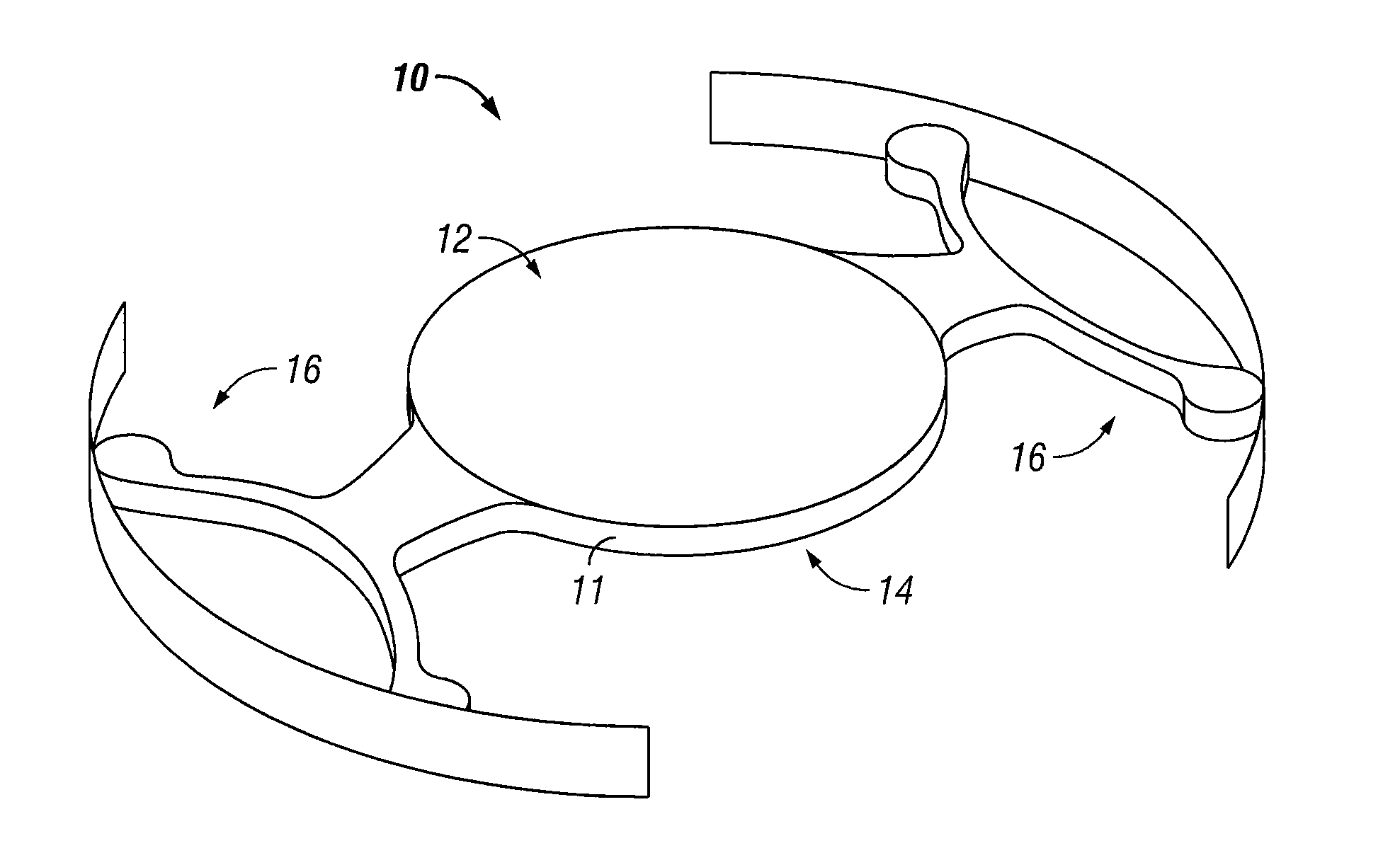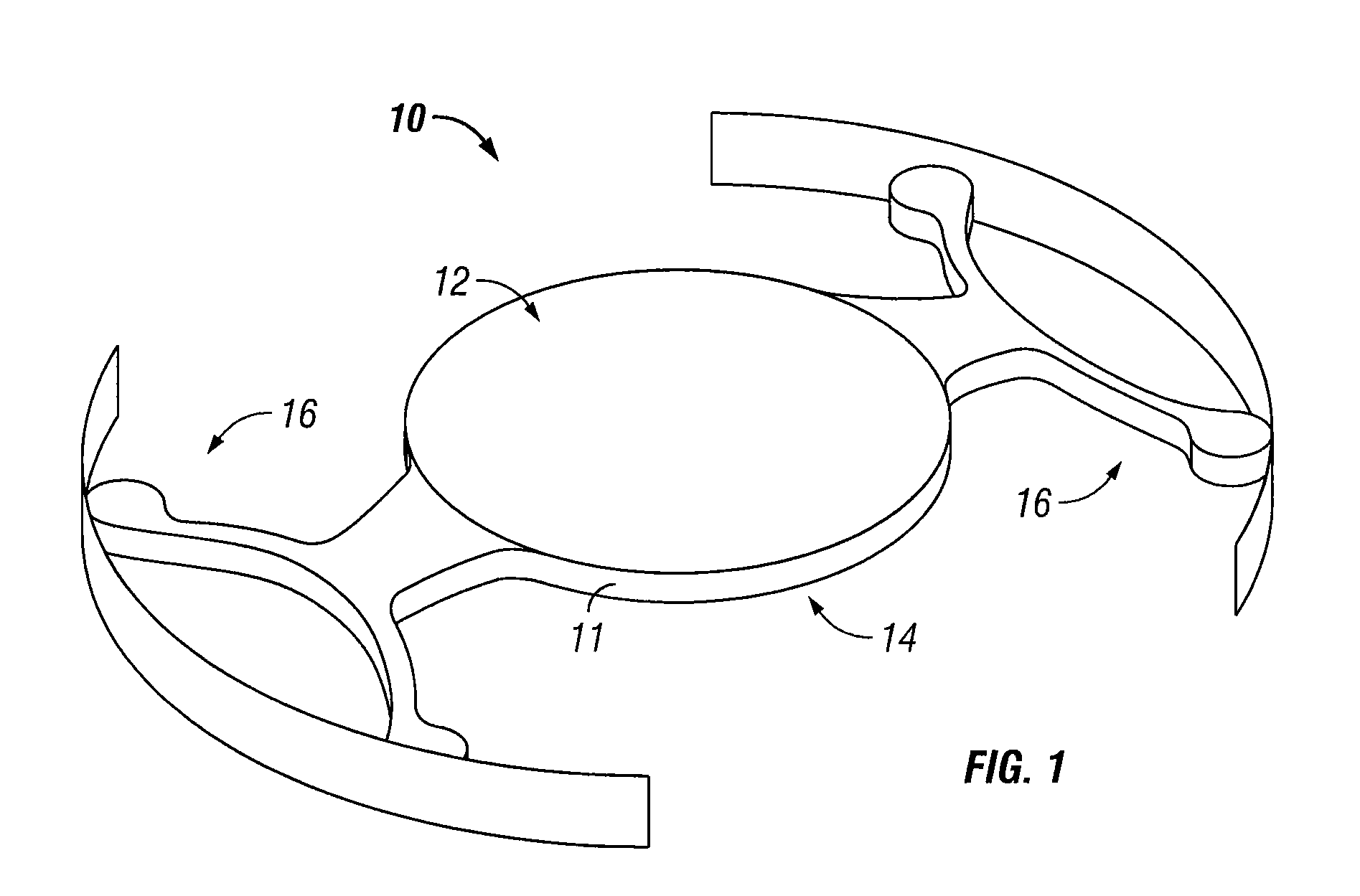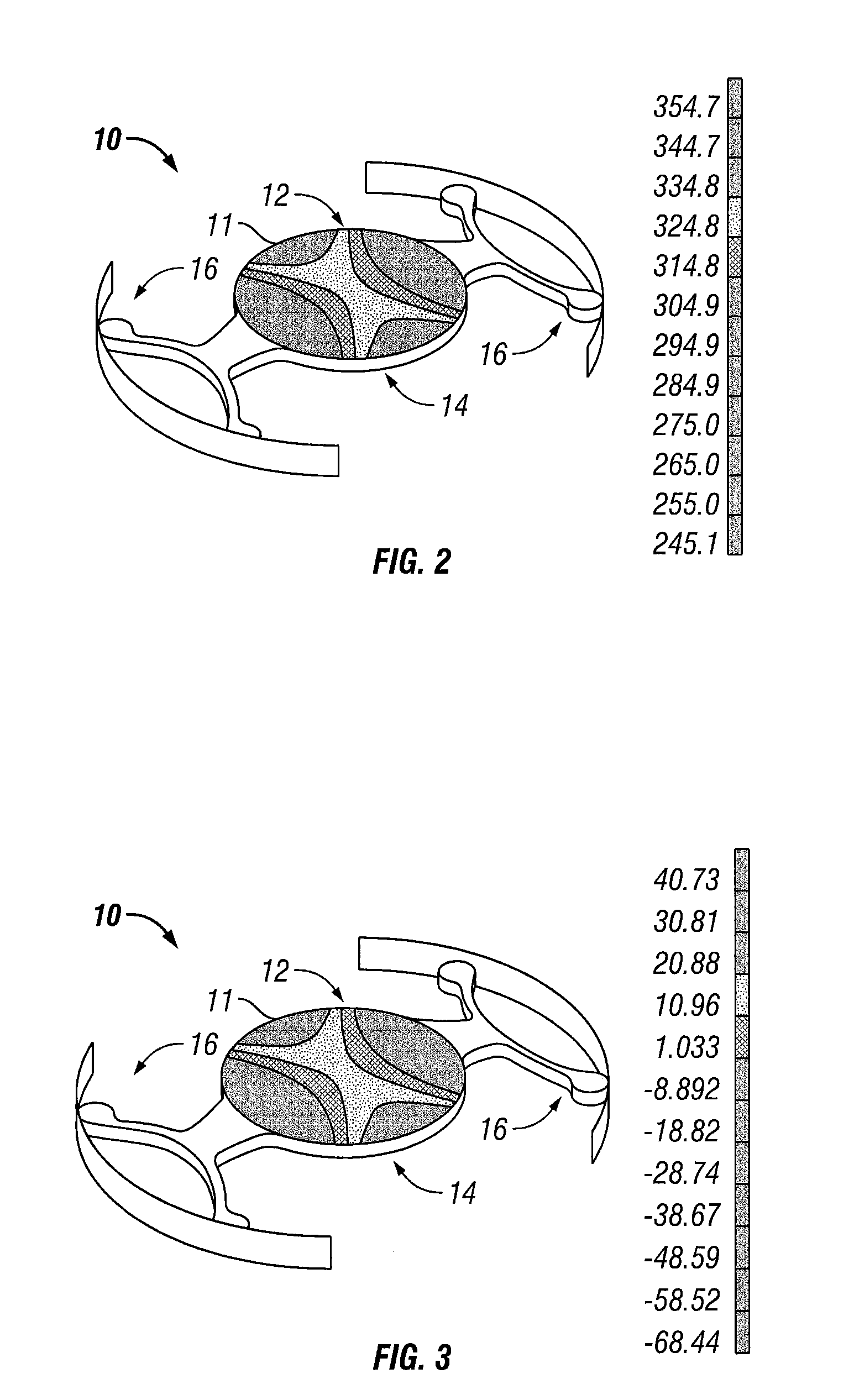Intraocular lens configured to offset optical effects caused by optic deformation
a technology of optical effects and lenses, applied in intraocular lenses, instruments, medical science, etc., can solve the problems of reducing the optical performance of lenses, traditional iol designs have not considered the optical effect of deformation, etc., to reduce the effect of compression, thinner lenses, and reduced stiffness of haptics
- Summary
- Abstract
- Description
- Claims
- Application Information
AI Technical Summary
Benefits of technology
Problems solved by technology
Method used
Image
Examples
Embodiment Construction
[0039]Embodiments of a method and apparatus for offsetting the optical effects caused by compression of the lens and deformation induced by compression of the lens optic or fixation components are disclosed.
[0040]Various embodiments of the disclosure are illustrated in the FIGURES, like numerals being generally used to refer to like and corresponding parts of the various drawings.
[0041]As used herein, the terms “comprises,”“comprising,”“includes,”“including,”“has,”“having” or any other variation thereof, are intended to cover a non-exclusive inclusion. For example, a process, article, or apparatus that comprises a list of elements is not necessarily limited to only those elements but may include other elements not expressly listed or inherent to such process, article, or apparatus. Further, unless expressly stated to the contrary, “or” refers to an inclusive or and not to an exclusive or. For example, a condition A or B is satisfied by any one of the following: A is true (or present...
PUM
 Login to View More
Login to View More Abstract
Description
Claims
Application Information
 Login to View More
Login to View More - R&D
- Intellectual Property
- Life Sciences
- Materials
- Tech Scout
- Unparalleled Data Quality
- Higher Quality Content
- 60% Fewer Hallucinations
Browse by: Latest US Patents, China's latest patents, Technical Efficacy Thesaurus, Application Domain, Technology Topic, Popular Technical Reports.
© 2025 PatSnap. All rights reserved.Legal|Privacy policy|Modern Slavery Act Transparency Statement|Sitemap|About US| Contact US: help@patsnap.com



